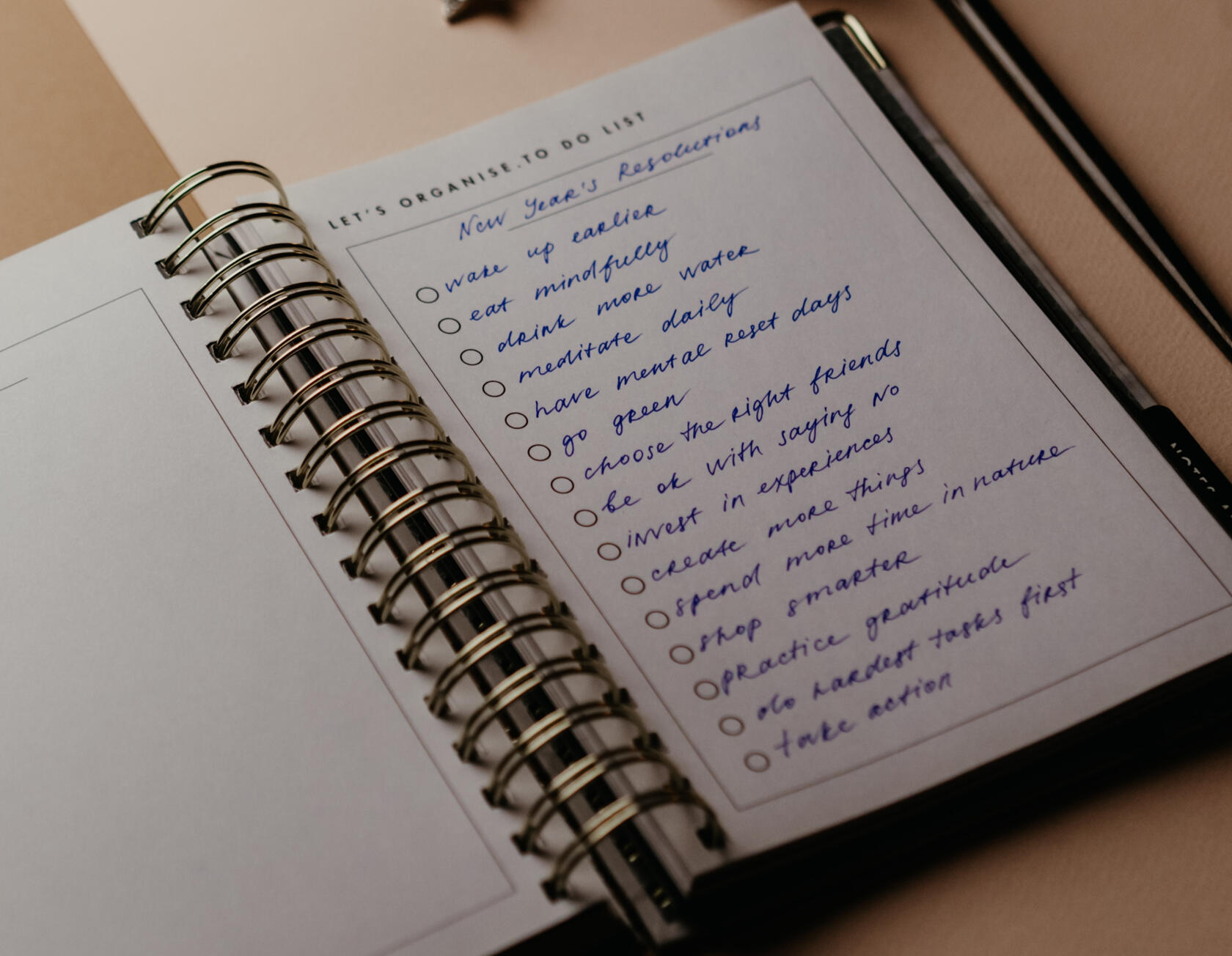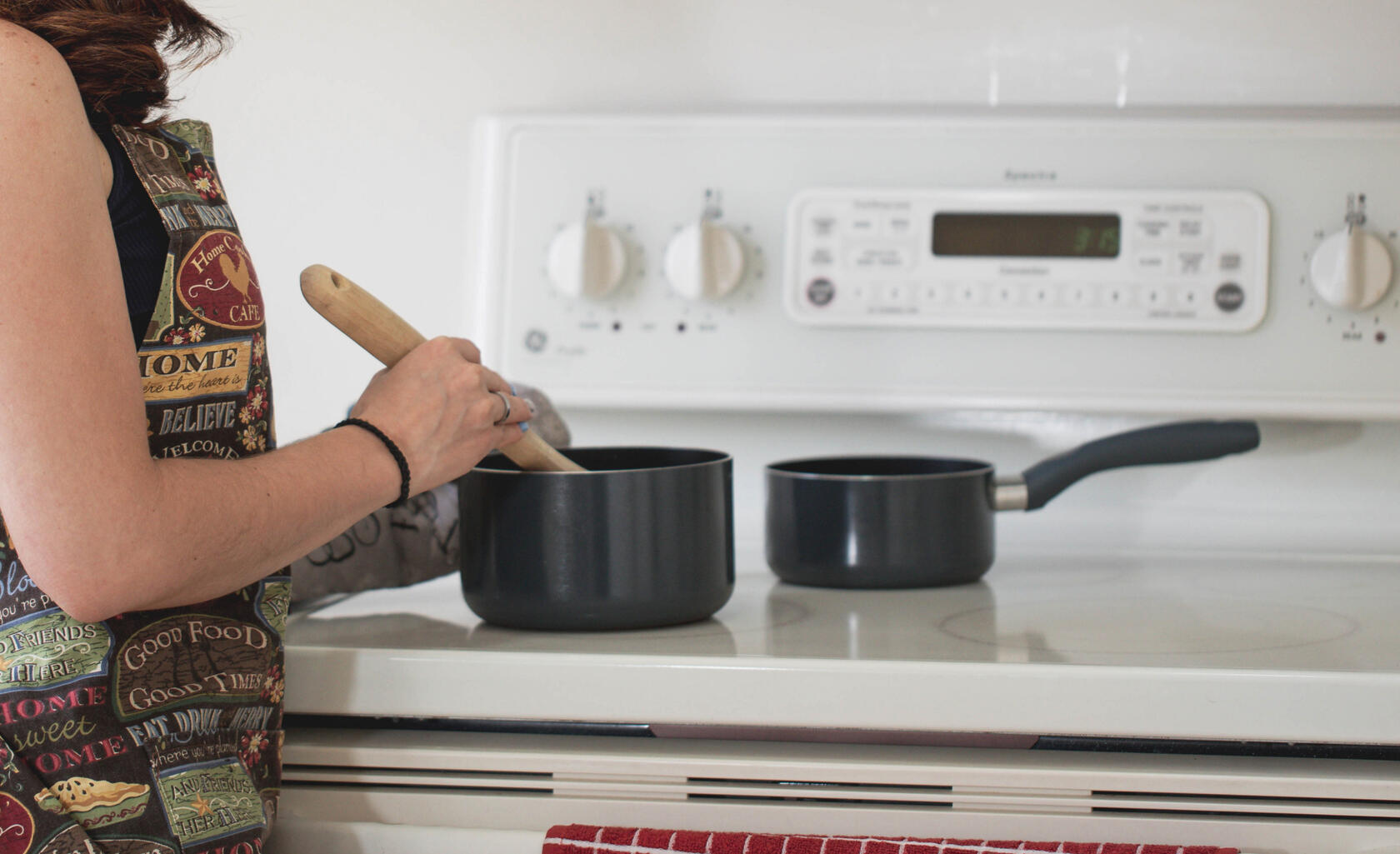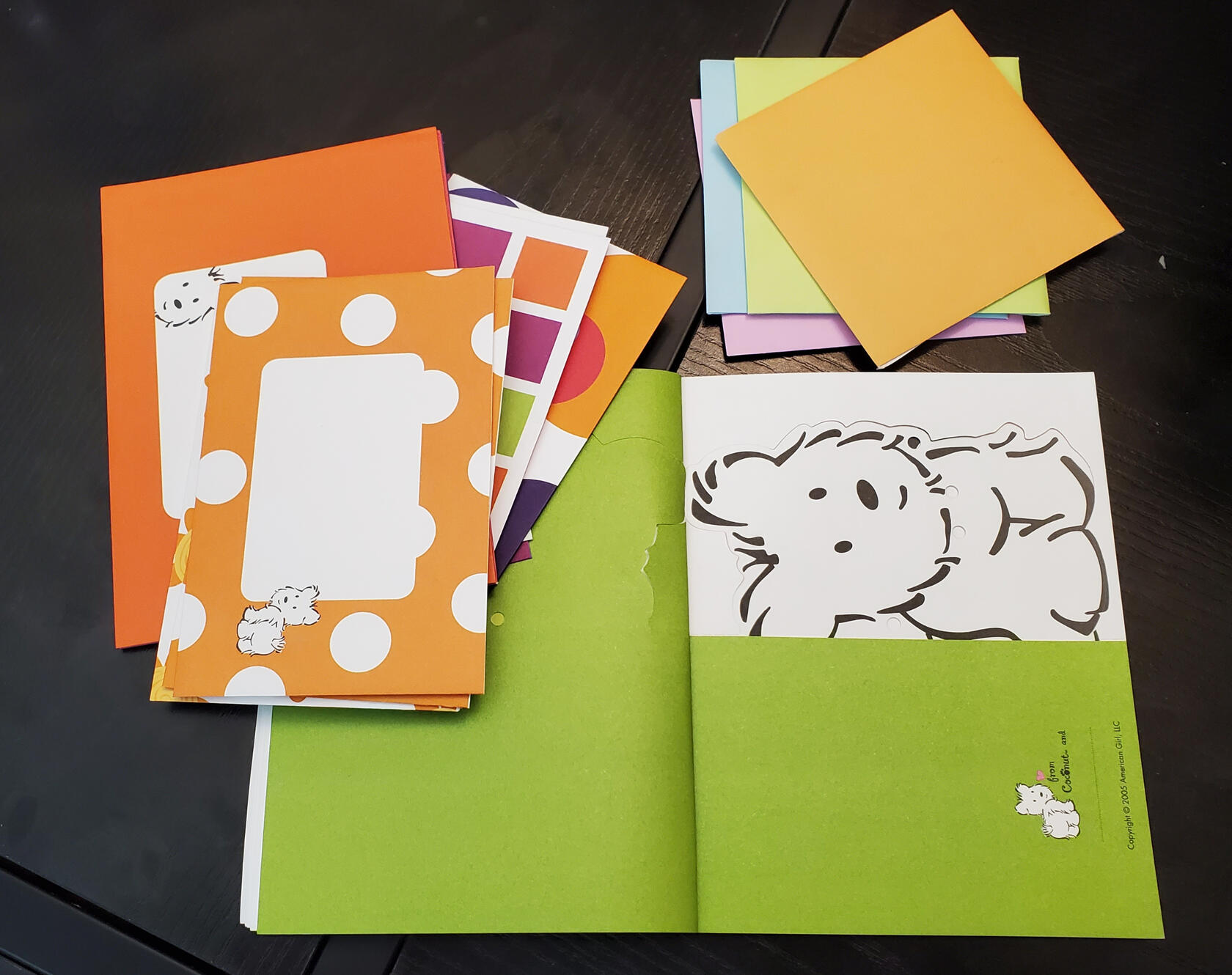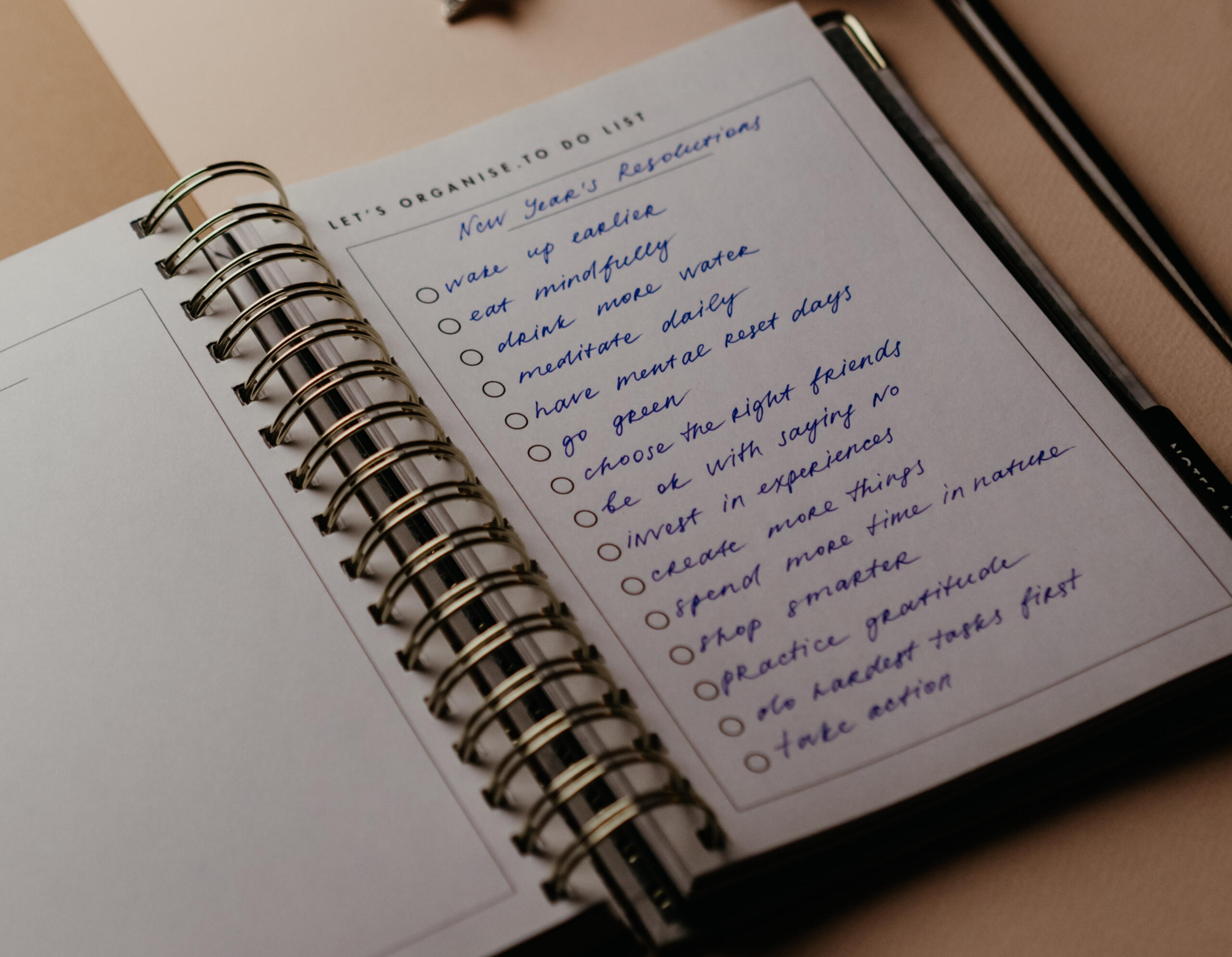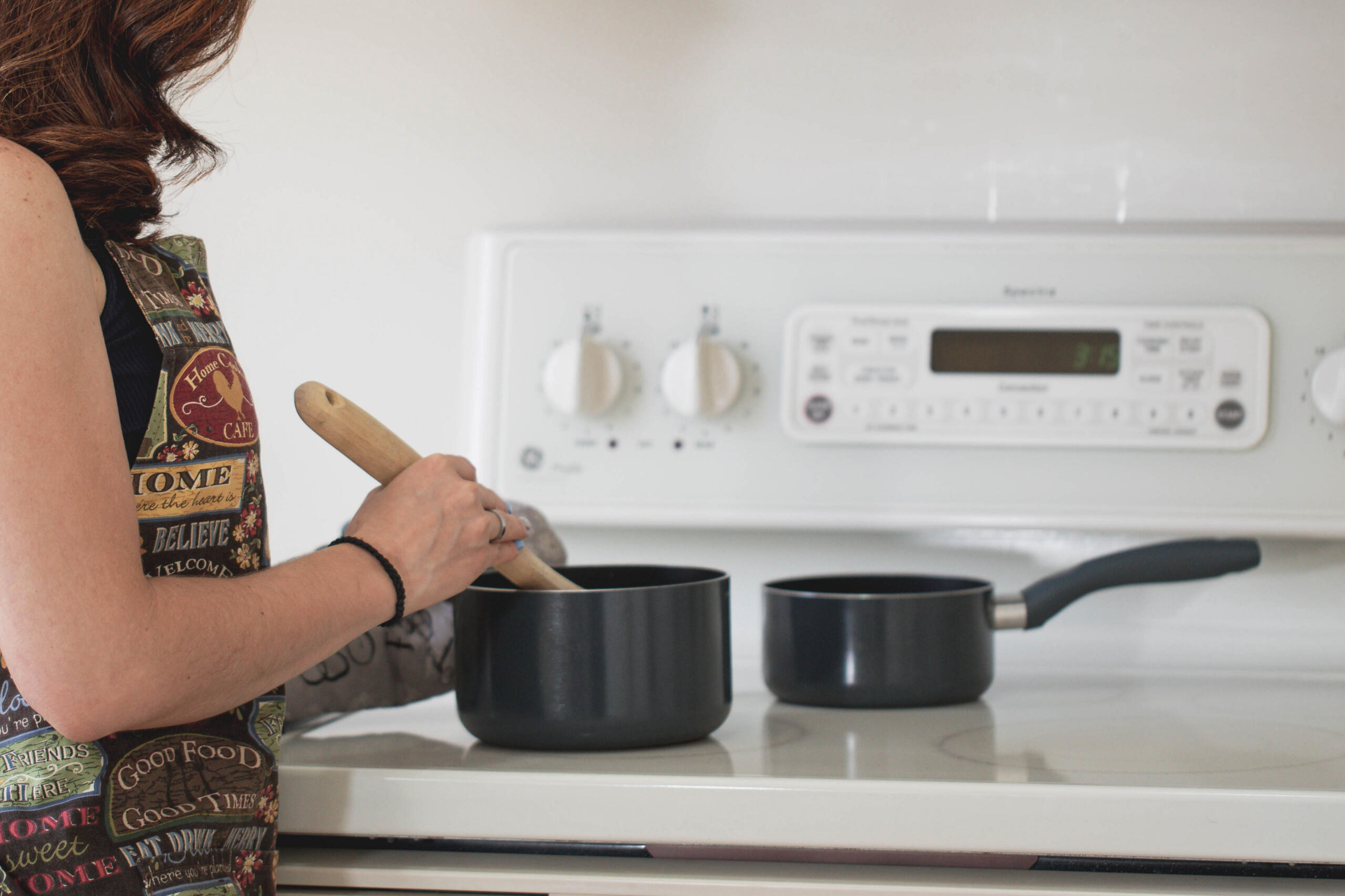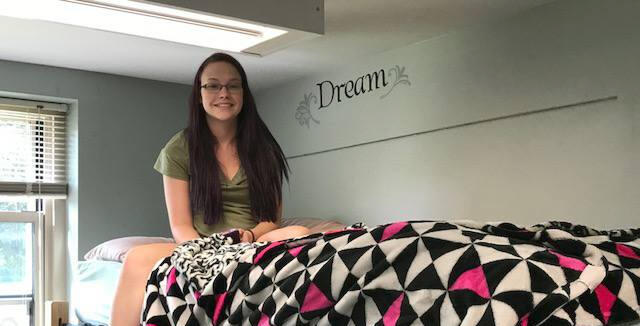What is it costing you to have incomplete tasks on your to-do list?
Do You Want To:
• Cross off the to-do list item that has been on your mind for months?
• Be able to effectively use your calendar or planner?
• Organize your workspace so you know where things are?
• Find and complete all of those "I know I'm missing something" tasks?
• Get out of the self-shaming cycle of procrastination?
• Feel confident you can complete your daily to-do list?
• Be able to meet deadlines?
Contact Alex today to find out how working with her can help!
I help entrepreneurs with ADHD learn how to stop fighting their own brains so they can stop wasting time, get more done faster, and build the career they desire.
I help you identify what already works for you and teach you how to create systems and habits that build on that to make your life easier. You'll learn and practice skills to help you get out of the self-shaming cycle of procrastination, so you can implement strategies that help you succeed.
I’m based in Michigan, and I work primarily on Zoom. My clients are located across the country.
About Alex

I'm Alex Jackman-Wheitner, the ADHD Coach for Entrepreneurs.I am passionate about teaching entrepreneurs how to stop fighting their own brain so they can get their shit done.
I graduated from Oberlin College with a bachelor’s degree in psychology. While at Oberlin, I co-created a peer-to-peer program designed to teach students with ADHD, ADD, Autism, Depression, or other things that affected their executive functioning how to use their strengths to design systems that helped them get more done.
Folks with ADHD often need different tools than folks without ADHD.
After graduation, I opened my own business helping college students, professionals, and entrepreneurs learn these same skills.
Over the last five years, I've discovered that my true passion lies in helping entrepreneurs with ADHD learn how to play to their strengths so they can build the business of their dreams.
I am currently located in Kalamazoo, Michigan. I do most of my work online through Zoom, and I have clients across the United States.
In my free time I play all types of board games and dabble in designing new games. I also love spending time outside hiking and traveling around the Midwest visiting family.
My Approach
My approach to working with my clients is simple – I want to help you identify what works for you already and learn how to build on that to make your life easier.
Each of my clients’ needs differ. I will always meet you where you already are and get you the skills you need to be the best possible version of you. This means that the skills I teach my clients also differ. That's why I work one-on-one with clients to create a plan and a process designed to help you.
However, these are some of the skills or areas that we may work on together:
• How to create routines that benefit you and implement them in ways that you can stick to
• Create clear steps for completing projects
• Identify and overcome the blocks that are holding you back
• Practice estimating time that tasks will take
• Figure out what accountability strategies work for you and implement them
• Create schedules that make sense to you
• Find a planner or idea organization system that works for you
• Write goals and break them into actionable steps
• Create boundaries and communicate them to others
• Write a to-do list that works for your brain
•Physically organize your space to make it function for you
Blog Posts
How to Write a To Do List to Get Things Done
Many people find that listing out their tasks can make the difference between completing a task and not completing a task. However, for people with executive function issues, writing a to do list may feel overwhelming, unhelpful, or an impossible task in and of itself. When I work with my clients I focus on breaking large, unmanageable projects into actionable tasks. These actionable tasks can help you know exactly what the next step is, how much time it will take, when to do it, and how to complete it.
Here is my list of ways to make your to do list actually help you get tasks completed:
• Break large projects into smaller, clear tasks. Often when we think about things that we need to do, we may think of large projects that feel nebulous or overwhelming. Most people think of tasks such as, “clean my room.” This is not a task. This is a project. “Clean my room” could mean anything and will often lead to confusion and frustration when it comes time to act on that task. We need to break it down into its components, such as: put dirty laundry in hamper, take dirty dishes to kitchen, pick up trash and take it to the trashcan, put fresh sheets on the bed, vacuum the floor, wipe down dusty surfaces, etc. Each of these tasks is something that you can actually complete and will provide clarity when you’re thinking about how to accomplish cleaning your bedroom.
• Use action verbs in your tasks! When I was in college, I used to make a weekly to do list for myself of all the assignments and projects that needed done that week along with the activities I needed to do for my personal life. For almost a year I knew I wanted to find a new doctor and make an appointment. For that year, every week I would add the task to my list: “doctor.” The problem is that “doctor” didn’t mean anything to my brain when it came to trying to act on that. I could not do any action that would help me accomplish the goal. When you are writing a to do list, it is crucial to write it in a way that makes the action clear. Did you notice that my example steps for cleaning your room all had an action verb in them? Put dirty laundry in hamper. Vacuum the floor. Wipe down dusty surfaces. Pick up trash. Take it to the trashcan. These steps all tell you the specific action to take. Once I learned that I needed to break my goal into actionable tasks I was able to take the steps to find a new doctor, such as: looking on my insurance website for a list of providers, choosing a few that I thought might be a good fit, calling one to try to schedule an appointment, etc.
• Lastly, your tasks should be so clear that you could yell them out a car window to your friend, and you friend could complete them. If you have ever been a manager, tried to teach someone a new skill, or been around kids you may have noticed that the more detail you provide when you list out steps for someone, the easier it is for them to complete the tasks. If you tell a child who has never done their own laundry to “do your laundry,” they will have no idea what that means. They may end up doing a third or half of it, but it is unlikely that they will manage to complete all the necessary steps. You can do this for yourself too! You can write down each of these tasks: collect all dirty laundry, put dirty laundry in washer and start it, switch laundry to dryer, take out laundry and fold it, put away folded laundry. Give yourself the details that you would want to receive from an employer or a friend if you helped them with a task. Even if you know deep down what you mean when you write “email” on your to do list, give yourself enough information that you don’t have to remember what you mean every time you read the task. Instead, you could write something like, “email John to follow up about staff meeting on Wednesday” or “tell Prof. Miller I need August 3rd off.”
Bonus tip! Write down each of the steps for a large project as their own individual tasks. This
serves a dual purpose. First, it gives you the opportunity to compete one part of the project and
note its completion while being able to come back to the next step later and still know what
needs done. For example, if you wrote out the steps for doing a load of laundry as I showed in tip
3, you could check off “collect all dirty laundry” even if you didn’t have time to put the load in
the washer at that moment. Second, it gives you the opportunity to cross off tasks more often
which boosts serotonin and dopamine! It is thought that ADHD, one diagnosis that can affect
executive functioning, has a relationship to decreased dopamine in the brain. For many people
with ADHD or other executive functioning issues, boosting the reward neurotransmitter
dopamine can make it much easier to complete subsequent tasks. Stickers and check marks may
seem silly, but there can be benefits to visually seeing evidence of your hard work!!
3 More Tips For Writing To Do Lists to Get Things Done
In my last blog, which you can read here, I gave you three steps to write to do lists to help you get your projects done. Today I have three more tips you can start implementing right away. These steps may not always be necessary to include when writing a to do list. However, if you are having trouble completing the tasks on your list, or even writing the list to start with, they can be helpful. These additions can help your mind focus on how a task will get done rather than just what needs done. Additionally, by considering these relevant details about your list, you can sort your to do list by one of these metrics to decrease the time you are spending deciding which task to accomplish next!
• When a task needs done. Some tasks on a to do list have nebulous due dates, but others have specific times by which they must be completed. For example, folding your laundry usually does not have a specific due date, but a project for class or work might. When you create a to do list, it can be helpful to add the due date to the list so that you can keep track of what takes priority based on when it needs done. Additionally, if a task does not have an external due date, sometimes it can be helpful to create one for yourself. Some people work better under a bit of pressure, and having a nebulous project that does not include a deadline may feel like it is unnecessary to complete even if it would help. In these cases, giving yourself a deadline (and some grace if you don’t meet it) can help you prioritize completing the task.
• How long the task will take. For many people with executive function difficulties or anxiety or depression, it can feel like all tasks are impossible to accomplish. However,
some of those tasks may only take a couple minutes to complete. Next time you write a to-do list, add the estimated time you think the task will take. If folding your laundry
usually takes around 20 minutes, write that down. A task like unloading the dishwasher may only take 5 minutes. For other tasks they may take an hour. This information is important to know when you are creating a plan for what to do during your day. Additionally, many people with executive function issues may be over or underestimating how long a task takes. So, once you’ve started estimating tasks, take stock of how long the tasks actually take when you do them. If you notice that you’re over or underestimating the tasks, take that into account next time you write your list and practice your estimations. This can make a huge difference when it comes to determining what task you have time and energy to accomplish.
• Where the task takes place. Sometimes it can be helpful to also add where a task needs to take place. If you’re writing a do-to list for work, home, school, and errands all in one list, color-coding or adding a section for the location can help when it comes to actually accomplishing the task. This way, you can sort your tasks by location. When you are at home you don’t need to think about all the tasks you’ll need to accomplish at work or all the tasks you need to accomplish while you are out and about running errands. This can cut down on the time you spend worrying about other tasks or determining what to start next.
If you have all of this information added to a to do list, you can start to prioritize tasks by due date, time to complete, and where the task takes place. If you are at home and have 20 minutes before you need to leave, you could do a five-minute task due tomorrow, instead of thinking about a one-hour task due in a week that feels impossible to do right now. Next time you write a to-do list, try these tips and see if it helps you prioritize and accomplish more!
Where There's Smoke, There's... What's That?
In my house, my partner does most of the cooking. I don’t like cooking, and I have a really
difficult time with it. I do many other chores, and my partner is happy to cook. A few days ago,
my partner was heating some sausages in a skillet on the stove. They had to take the dog outside,
so they called me from the backyard and asked if I could flip the sausages for them. I happily
agreed and went to the kitchen to flip them. Here is what happened next from my perspective:
I flipped the sausages like I agreed to do and then stood next to the stove and watched a 25
second video. A moment later I heard the sliding door open, and I looked up to see the kitchen
was smokey. I had no idea why.
Apparently, my partner was actually asking me to watch the sausages and continuously flip them
until they were done. And it turned out that I had watched that 25 second video a few times. We
also have a burner on the stove that sometimes does not shut off when it gets to the right
temperature, which means it just stays hot and continuously heats the skillet hotter and hotter
until you turn the burner completely off.
All of these factors combined to mean that the sausages had burnt right under my nose, and I had
no idea that was happening until the noise of the door opening pulled me out of my video.
I felt guilty and quickly apologized to my partner. I turned off the stove and helped air the smoke
out of the kitchen. But how had I managed to stand directly next to something that was burning
without having any idea?
Well, in part, I did not notice because I was engrossed in my video. I do not think there is
anything inherently wrong with being engaged in an activity and not noticing things happening
around you, but it is important to know that one does that. I tend to set reminders for myself
when I know I am going to be engaged in an activity and might not remember to do other things.
I also know that if someone is talking to me, I need to set my phone down so that I can hear them
and really take in the information they are telling me.
But the other big problem was that I did not understand the directions my partner gave me. They
said to “flip the sausages,” and in my mind that just meant once. Most of the students I work
with have had a conversation like this with a caregiver, teacher, or family member.
“I asked you to take out the trash.”
“I did take out the trash.”
“Where is the new bag.”
“I don’t know. You didn’t say anything about that.”
“You should know that taking out the trash means replacing the bag.”
And maybe it seems obvious to the adult, but to the student that is an entirely separate request.
The student is likely not trying to be obstinate. They just simply did not know what was being
asked of them. Or their executive functioning issues cause them to have a more difficult time
looking into the future to determine what all of the steps are for a specific task.
That is what happened to me with the sausages. I literally did not understand the request. Maybe
it should have been obvious to me that I should do something else when the room started getting
smokey. But I did not notice, because my brain had turned off the part that thought the sausages
were my job. I did not think I needed to do anything else with them beyond what I had already
done. So, my brain stopped taking in information about them.
When I work with students, I want to help them have tools to handle situations like this. I have
been learning about my executive function issues for over five years, and events like this still
happen. For most of the students I work with, and for many people in general, these kinds of
accidents may happen. But we can create systems so they happen less often, and we can come up
with ways to respond to these situations.
In this case, I created a new routine where my partner lets me know if a request they make is a
one time thing or if I need to watch the food and do something continuously. I also reevaluated
how engrossed I get in other activities while something that could be potentially dangerous is
happening, for example, the stove or oven is on.
I also responded in exactly the way that I teach my students to respond. I helped clean up, I
apologized, and then I discussed routines or solutions with my partner so that I can be better
prepared next time.
Many of my students come to me when they feel like their life is falling apart, or their parents
feel like their student’s life is falling apart. This could mean that they have trouble with big
things like finishing their homework assignments on time, applying to colleges, or remembering
to be home for family events. But I find that many of my students also have trouble with the
small things. They may lose their shoes or their wallet, leave dirty dishes in their room, lose track
of time on their phone, or forget to eat dinner. These small things can add up, and, in many
families, these are the struggles that create the most daily conflict. These are the struggles that
mean that parents walk past their student’s room every day and get frustrated or make a student’s
life difficult because they have not nourished their body.
When I work with students my goal is to help them with both the big and the small things. And
while we may never be able to identify every single one of these small situations and create a
solution for every individual issue, we can create routines and identify tools to deal with most of
these conflicts.
Why I Do What I Do
I’m sitting in my sophomore Psychology class at 3:30pm. My eyes are still red and puffy from crying over an essay the night before. We’re going through disorders in the DSM and learning the basics of each disorder’s symptoms, what they stem from, and typical approaches to treatment. The slide flicks to the next disorder.“Must have 6 of the following symptoms which have persisted for six months or more:
Often fails to give close attention to details
Often has difficulty sustaining attention to task or play activities
Often does not seem to listen when spoken to directly
Often does not follow through on instructions and fails to finish schoolwork, chores, or duties in the workplace
Often has difficulty organizing tasks and activities
Often avoids, dislikes or is reluctant to engage in tasks that require sustained mental effort
Often loses things necessary for tasks or activities
Is often easily distracted by extraneous stimuli
Is often forgetful in daily activities”I texted my mom, “hey, is it possible I have ADHD?”(actually it probably went something more like, “uhhhhh omgggggg. DO I HAVE ADHD????”My mom has a PhD in Counseling Psychology. She used to diagnose other people’s kids with ADHD. A few years before I was in this class, my mom had realized that maybe she had ADHD.Somehow, it never occurred to any of us that maybe I had ADHD.After that initial conversation, my mom and I have had numerous conversations about random events from my childhood, random things she and I both do that (APPARENTLY????) no one else does, and a lot of “oh my god would you stop clicking that damn pen.”It turns out, you don’t have to sob over your math homework every single night of junior and senior year in high school. You don’t have to sob over your 4th grade reading assignments. You don’t have to sob over your college papers. There’s really no sobbing required???Luckily, soon after I realized that maybe I had ADHD, I met my mentor. They worked in the disability office of my college. They taught me sooooooooo many strategies that helped me figure out how to get through college. With their help, a bit of research, and a lot of trial and error, I learned how to create systems, routines, and processes to stay functioning and productive.There are a lot of reasons why I do what I do, but one major reason is because I still see entrepreneurs and professionals crying at the desk because they can’t figure out how to get through the tasks they need to get through. Or they’re working all week and all weekend trying to catch up on last week’s work and it’s still not done.Even when they’re not crying at their desks, they’re missing opportunities. They can’t figure out how to finish their lead magnet or they can’t get their newsletter written. Or they failed to follow up with an excellent speaking gig and now it’s too late. Or they’re just consistently showing up late to client meetings.Fundamentally, entrepreneurs with ADHD are losing money. They’re losing clients, referral partners, speaking gigs, opportunities.And money.ADHD looks different in adults than it does in kids. And a lot of people didn’t get diagnosed as kids. There are a lot of reasons you may not have been diagnosed as a kid.
Maybe you didn’t have insurance.
Maybe you’re a woman
Maybe you’re not white.
Maybe you were the “smart kid” but “you don’t apply yourself.”
Maybe you were just “weird.”
Maybe when you were a kid they didn’t diagnose ADHD that often.But as an adult it looks different and it can be difficult to realize that ADHD is contributing to why you feel that way.Sometimes as an adult it looks like never really knowing what you’re supposed to be doing next.Maybe you eagerly start multiple projects simultaneously, only to struggle with finishing any of them.Maybe you have a list of 35 projects you keep meaning to get to but can’t.Maybe you are spending all of your time on one aspect of your business and neglecting all the others, despite knowing you should be doing other things.Maybe you impulsively say yes to too many people and too many things.Maybe your desk always looks like a hotmess express and you can never find the right document at the right time.Maybe you meticulously schedule your day only to be hours behind schedule by midmorning.Maybe you attend workshops and seminars to enhance your skills, but your mind decides to go on unrelated adventures, leaving you unsure what you were supposed to remember.Maybe you’re working all weekend catching up on last week’s work despite your best efforts.Maybe you are joining meetings 3 minutes late.Maybe you’re hyperfocusing for 10 hours before you realize you haven’t eaten all day.Maybe you are constantly staring at blank documents trying to decide what to write.Maybe you just keep losing your keys all the goddamn time.Perhaps, despite your genuine passion for what you do, the constant battle with focus and organization makes you question whether being your own boss is really the best path for you.I promise, it can be different.If you’re sitting at your desk at 3:30 and you read that list of ways that ADHD can show up in your business, and you’re sending that text to your mom, significant other, or business friend about whether you might have ADHD, I promise things can get easier.I can’t diagnose you with ADHD, but I can tell you that the systems I help you create in your life can make it so much easier to function.You don’t have to cry at your desk.You don’t have to wonder if building your own business is right for you.You don’t have to waste time. You don’t have to lose money.You can build the business and the life of your dreams with the right processes, routines, and systems that make things easier for you instead of harder.You can work with your brain to get more done faster and make more money.That is why I do what I do.I want it to be easier for other entrepreneurs.
A Funny Story
So I have a funny story.I mentioned in my Facebook and LinkedIn posts yesterday how much I love office supplies. And here’s some proof. It’s also proof of how much of a sucker I can be for that ADHD thing that happens where you buy a bunch of stuff for a project, hobby, craft, idea, etc and then… you get distracted and never touch it again. But you swear you’ll come back to it someday!!!So I have mentioned a few times that I moved this summer. This is the first move I’ve done where I’ve really, truly brought everything from my parents’ house, everything that was in my dorm in college, everything I’ve been dragging from place to place with me. To be honest, I should have moved this stuff over time instead of all at once, because I still have boxes of shit all over this house that are in various states of packed and unpacked. But that’s a story for a different day.The part that’s important is that I found this children’s American Girl card-making kit. The copyright on the package is… 2005. That means I have had these for 18 years. You may be thinking that these must have been found in a box of sentimental items from my parents’ house that I just haven’t touched in the last 15 years.Nope.Not so much.I have been carrying these dog and cat cards and envelopes around from dorm to dorm, apartment to house, for 18 years. They have been in my box of craft supplies that I regularly use.Have I sent one of these cards to anyone in the last 15 years? Nope.So how did we get here?Well, the same way everyone with ADHD ends up hoarding their art supplies for decades - I kept telling myself I’d use them!If I remember right, I received these as a present as a kid - obviously. And they probably did get stuffed in a box somewhere for a while. But then, like every millennial-gen Z cusp, I am obsessed with the USPS and getting and sending mail. I think it’s so fun. So I probably found them at some point and thought, damn, these are actually kind of adorable. I should send mail to my cousins. So I carried them off to college with me. And then to the next dorm. And then to the next. And then back home. And then to my first place out of college. And then the apartment. And then my parents’ house. And then.. And then and then…And here we are. I keep looking at them thinking, those are weirdly cute even though they’re kind of tacky and I think it would be really fun to mail them to my family.But I haven’t done it yet.And will I ever actually do it? Who the eff knows. Probably not.So if you’ve been looking for a sign or permission to throw away the stuff you’ve been carrying for ages and ages hoping you’ll come back to, here it is. I release you. You can let go of the stuff you carry from home to home from hobbies long gone.I’ll never make you get rid of anything. I’ll never tell you that you can’t keep ahold of your art supplies or your hobby collections. But if they’re no longer serving you and you just keep carrying them, you can let go of them. Even if they cost money. You don’t have to keep stuff you don’t love or won’t use. Even if it’s cute.So, if I don’t send one of these silly cards to any of my family members before the end of next week, they’re going away <3

